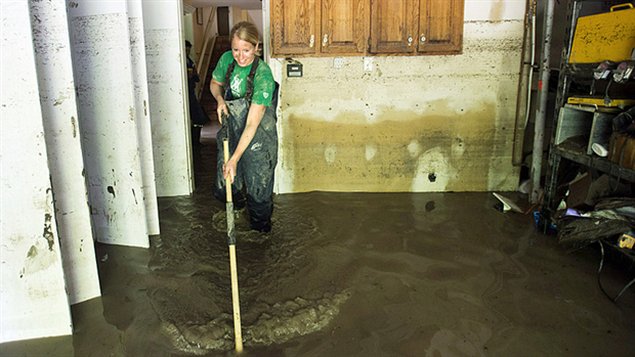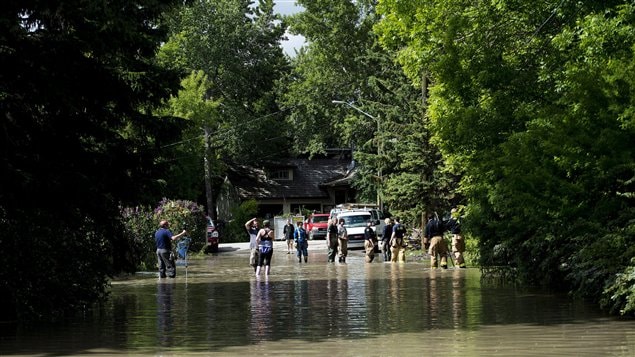The summer of 2013 will be remembered by many Canadians for the extreme weather events particularly the rain and flooding that occurred in several regions. Now the increased insurance claims resulting from extreme weather are becoming a problem that is eliciting warnings from those who study climate change, and those who insure homes.
Blair Feltmate is a professor in the Faculty of Environment at the University of Waterloo. He is also Chair of the Climate Change Adaptation Project Canada. He says it’s not just the severity of the weather as much as it is the frequency of severe weather that is the concern of climate change forecasters. He and others are warning Canadians to be prepared.
It’s reported the province of Alberta now faces a decade-long clean-up effort that could cost $5 billion according to BMO Nesbitt Burns estimates.
Blair Feltmate says there are changes to infrastructure that Canadian cities and municipalities must implement, as well as simple measures Canadian homeowners can take to mitigate the effect of wilder weather.
Warmer and wetter weather
Blair Feltmate says climate models for 2020 to 2050 indicate the climate in southern Canada will continue to get warmer and wetter. He says it is imperative for municipalities to make the changes necessary to cope. Most important is re-drawing flood-plain maps, constructing berms and bioswails, areas that can soak up and absorb the heavy rain, and change how parking lots are built to allow for more drainage.
As for home-owners, Blair Feltmate says back-water valves are invaluable. These are valves that don’t allow the sewer water to back up into basements. They are not yet mandatory in new-home construction, but at the cost of just two or three hundred dollars, Blair Feltmate says they should be.
Canadians have to re-think the use of their basements and make sure expensive electronic equipment, and anything else of value, is positioned high up above the floor. On the outside of the house, clearing eaves and downspouts as well as contouring around the foundation to make sure water drains away from homes, are some of the simple measures that may save a lot of heartache and work.

Canadians may also have to be prepared for higher home insurance costs. According to the Insurance Bureau of Canada, from 2003 to 2012 losses exceeded premiums collected for seven out of nine years, resulting in a total cumulative loss of approximately C$11 billion.







For reasons beyond our control, and for an undetermined period of time, our comment section is now closed. However, our social networks remain open to your contributions.